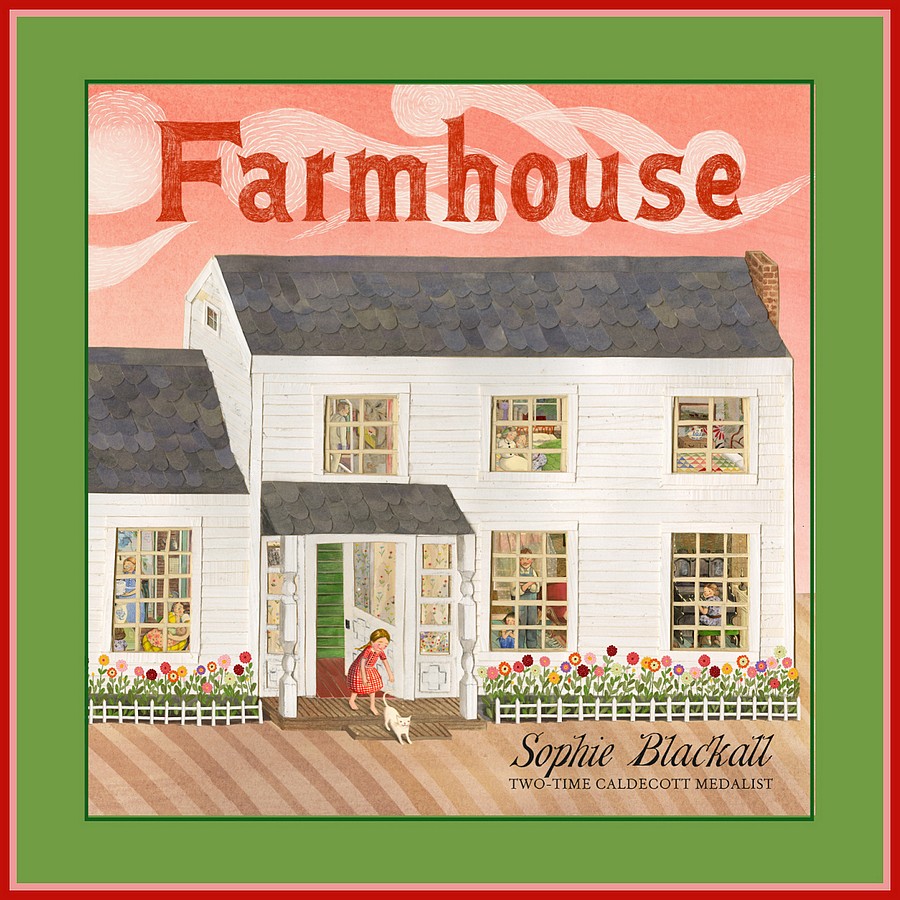
Farmhouse by Sophie Blackall is an exquisite book that transports the reader back in time to a farmhouse that was built in the 1850s, however was home to the Swantak family in the 1930s and 40s. This is a beautiful tribute to the past, a celebration of family history and the power of stories. The illustrations are stunning and exquisitely detailed bringing a bygone era to life. Sophie has used salvaged pieces from the house as clues to help her piece together the story of this family and used these to create collages in her illustrations.
This book is a glorious window into the different seasons of life this family, with twelve children, experienced in the 1900s. The reader can immerse themselves in their world, their trials and tribulations, as the lilting text and illustrations reveal much about their daily routine, the foods they ate, chores they did, their interests and what life was like on a working farm at this time. The illustrations demand to be savoured as they are such a wonderful stimulus to contrast the modern day with the past as readers can compare the furniture, kitchen utensils, transport, clothing, farming equipment, the way the children spent their time and how they amused themselves.
Sophie explains in the story that the last family member left the farm and the house became abandoned. With no one to care for the house it fell into disrepair and became a home to many creatures. The story for the farmhouse did not end there. Sophie collected pieces from the home, spoke to descendants from the Swantak family and in her own home used this information to honour and reimagine their story and that of the farmhouse. In the author’s note there is further information about discovering the farmhouse, the research process as well as more information about the illustrations.
The endpapers are very much part of the story. The front endpapers contain some of the pieces Sophie recovered from the farmhouse (wallpaper, fabrics, lists, print sources, drawings and pieces created by the children). The endpapers contain photos of the house when Sophie discovered it as well as a photo of the handmade dresses that were smothered in mud that Sophie was able to clean and use in her collages to tell this story. The dust jacket of the book features the outside of the house with windows where the reader can have a peek inside and observe what the family is doing. However, under the dust jacket the cover of the book reveals the inside of the farmhouse, another layer to the story.
This is an astonishingly beautiful book steeped in nostalgia, supremely and richly detailed and tenderly reimagines the life of the Swantak family in their farmhouse.
